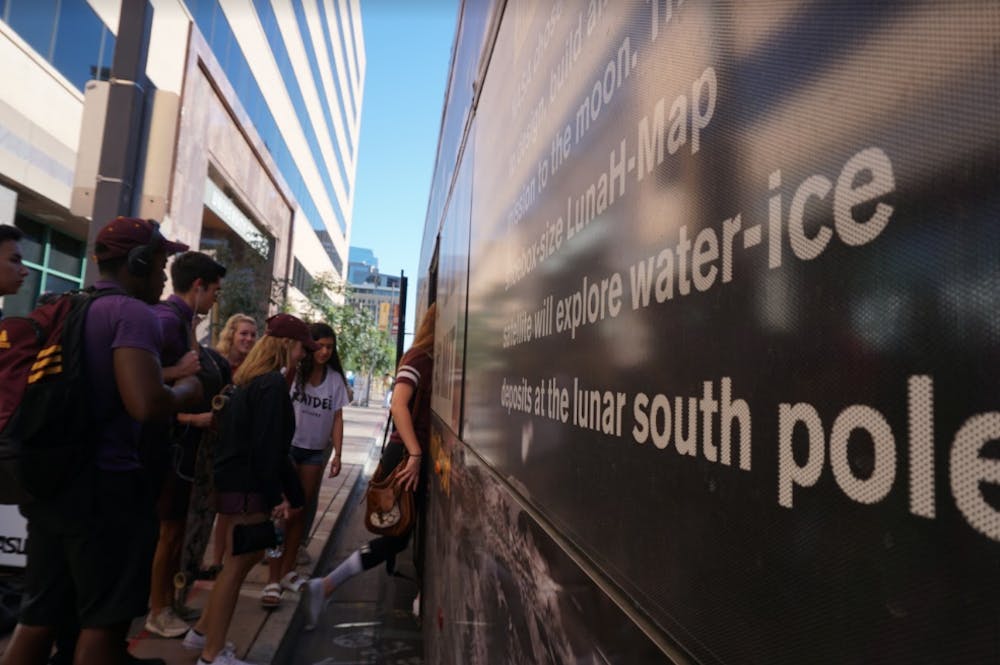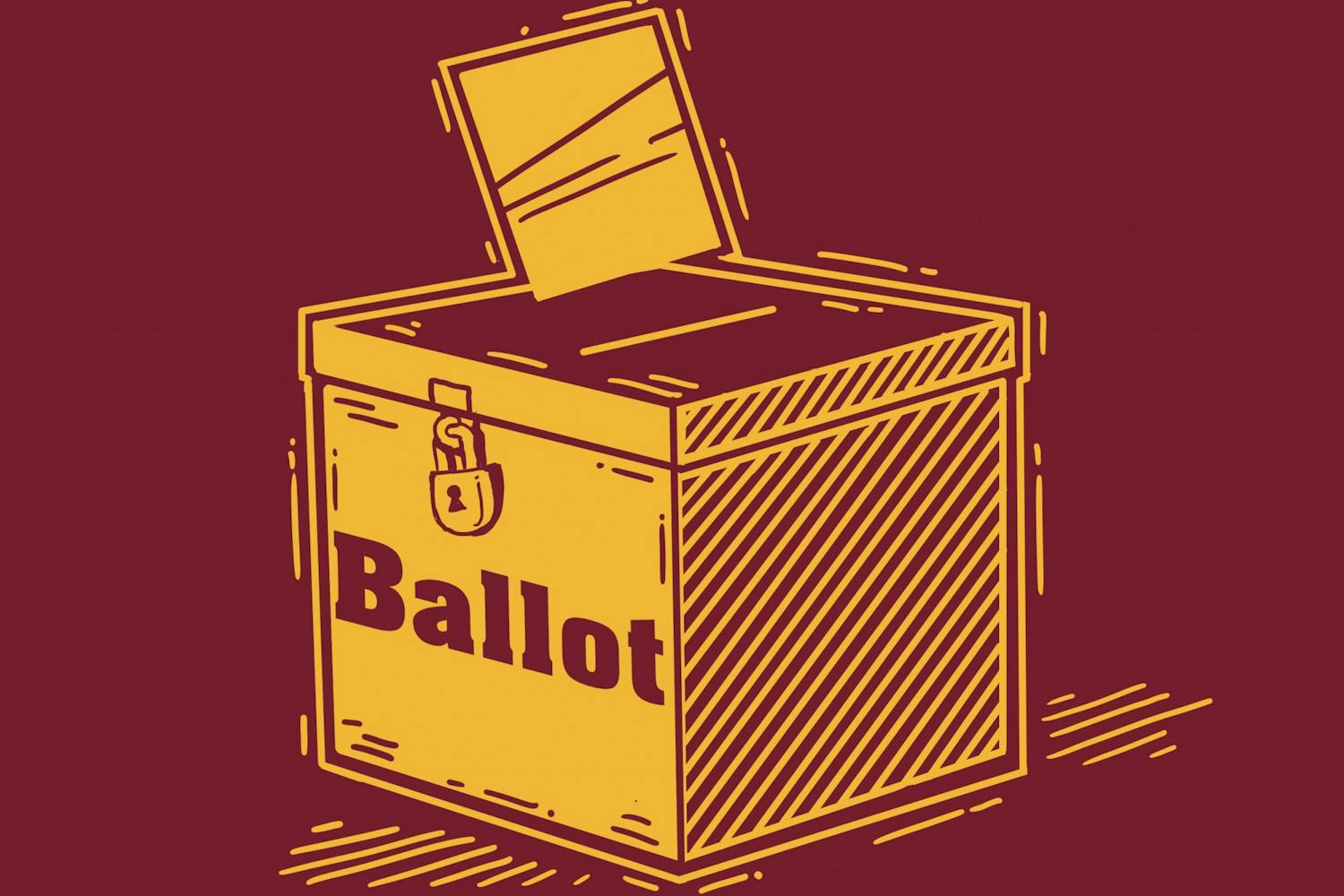Students can expect various improvements to the University intercampus shuttles within the coming months.
Given Arizona's climate, many students have said it is important that the shuttles have functioning air conditioning and arrive on time.
JC Porter, assistant director for commuter services for ASU Parking and Transit Services (PTS), said improved AC units and three different types of window tints have been tested on shuttles throughout the semester. PTS also plans to install new bus shelters on the Polytechnic and West campus shuttle stops by Summer 2018.
“The ones we’re looking at are the same ones the City of Phoenix are utilizing that was designed by a group of ASU students,” Porter said.
Porter said there would not be enough room between the building and the road for new shelters at the downtown Phoenix campus stop. But, he said that PTS is looking into which of the Tempe shuttle stop shelters would be viable for replacement.
Adelina Torres, a criminology senior who takes the shuttle between the downtown and Tempe campuses twice a week, said there are not enough shuttles, especially when the buses break down.
“They should increase the amount of shuttles they have, because sometimes they have multiple breakdowns. And then, there’s a whole bunch of people waiting, and we have to wait for the next shuttle to come,” Torres said.
Alyson Perkins, a public service and public policy sophomore who lives downtown, said that she has seen improvements in shuttle scheduling.
“From what I understand, ASU added another shuttle during rush hour, which has been really helpful. ... So, when I take the 4:30 shuttle back and there’s a lot of traffic, there’s an extra shuttle to take an overload of people back,” Perkins said.
Porter said 17 shuttles are currently in circulation for the most the day. Two more Maroon shuttles come into circulation during times in the day when traffic on Interstate 17 or Interstate 10 is the heaviest.
“We’ve added a fifth loop … to help alleviate those traffic issues they run into in the morning and in the afternoons,” he said. “It gives the bus driver basically an hour and a half to make the hour drive.”
In regard to shuttle breakdowns, Porter said that those are extremely uncommon and that typically buses are taken out of service as a precaution, and students often misperceive this as a breakdown.
“Safety is the highest priority for PTS and the shuttle provider,” Porter said. “Most cases where shuttles are taken out of service during the day is done as a precaution, not due to a mechanical failure. Any time a bus driver believes that there may be any issue at all, the bus is temporarily removed from service and a standby bus … is tagged to go in and run that route.”
Porter said engineers are working to improve the internal AC systems.
“To help keep the AC units cool, the shuttle company is actually coming up with an ingenious way of putting a water-sprayer on the coolant conditioner coils,” he said. “They have an engineer who’s trying to come up with new, innovative ways in order to get more cooling power out of those maximum-sized air-conditioners that are already in there.”
The modulations have been beta tested and were successful but are less necessary because the weather has cooled down, he added.
As for shuttle tardiness, Porter said busses transporting students from around 7 a.m. to 9 a.m. and 3 p.m. to 6 or 7 p.m. are usually the ones students see running late because the buses cannot avoid rush hour traffic.
“The shuttles experience the same issues that you do if you’re trying to go between downtown and the Tempe campus,” Porter said. “You might leave on time, but you might end up running into some things along the way.”
Students can look for updates on shuttle arrival times on the ASU PTS twitter account.
Although there are a number of opportunities for improvement with the intercampus shuttle system, Porter said that PTS, a self-supported entity, is taking initiative to lessen carbon impact, mitigate traffic issues and address all student concerns by next semester and semesters to come.
“Getting the students to and from campus is also the very key ingredient to the shuttle buses,” he said. “So, we’re happy to provide them.”
Correction: An earlier version of this article incorrectly stated that PTS is working with the Shell Company. Mechanics who work for the Silverado Stages, a shuttle company, are devising the AC improvements. The article has been updated to reflect the changes.
Reach the reporters at anmendo3@asu.edu and acwolfe4@asu.edu or follow @niceledes and @AlexandraWolfe_ on Twitter.
Like State Press on Facebook and follow @statepresss on Twitter.




